
Nestled on the Nile River next to Aswan City, the Nubian Village of Gharb Soheil is one of those little hidden gems I thankfully discovered while scrolling through Instagram and knew I had to visit. Renowned for its strikingly ornamental architecture, the village is the perfect getaway for wanderers, as the lack of any grid system encourages visitors to intuitively explore its winding streets and back-alleys, all of which are filled with brightly colored murals, paintings, reliefs, and other eye-catching designs.
By far the easiest way to reach Gharb Soheil Island (the official name of this particular Nubian village) is by hiring a local to take you on a short motorboat trip.
If you stay at Elephantine Island, there are plenty of boat operators willing to take tourists to wherever they wish, therefore, simply ask the boatman to go to the Nubian village, as this term is synonymous with the village of Gharb Soheil, known by locals as a magnet for curious foreigners.
Take note that before embarking the boat, a price must be negotiated and determined while booking the boat-trip, otherwise you risk getting overcharged. Assuming you probably aren’t that familiar with the local commuting fares, just ask your guesthouse reception for more information on what constitutes fair pricing.
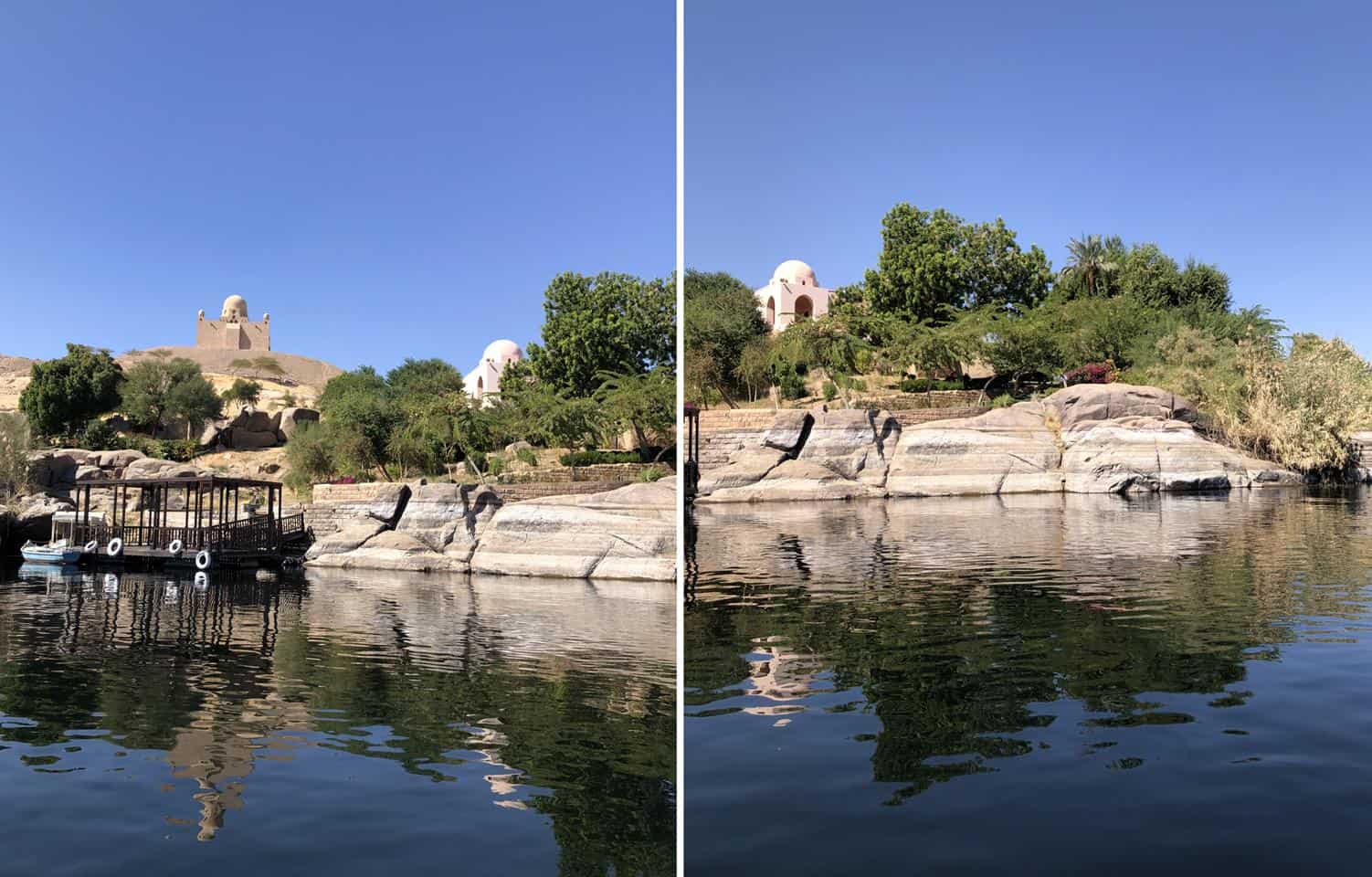
The boat ride to the village is very calm and tranquil on a clear sunny day. You will have the opportunity to see various sites along the way, such as the Mausoleum of the Aga Khan (pictured above).
photography by: Alex Stratikis
It is also worth noting that there are myriads of prearranged tours to Gharb Soheil, however, the relatively high cost and the limited time on the island make it significantly less worthy than arranging the all journey by yourself.
Nevertheless, it all boils down to your expectations, put simply, if you wish to explore the village without any rush, then the trouble of organizing it yourself is definitely worth it, whereas time limitation and a larger budget might entail a different approach, in any case, the village is a charming nook not to be missed.
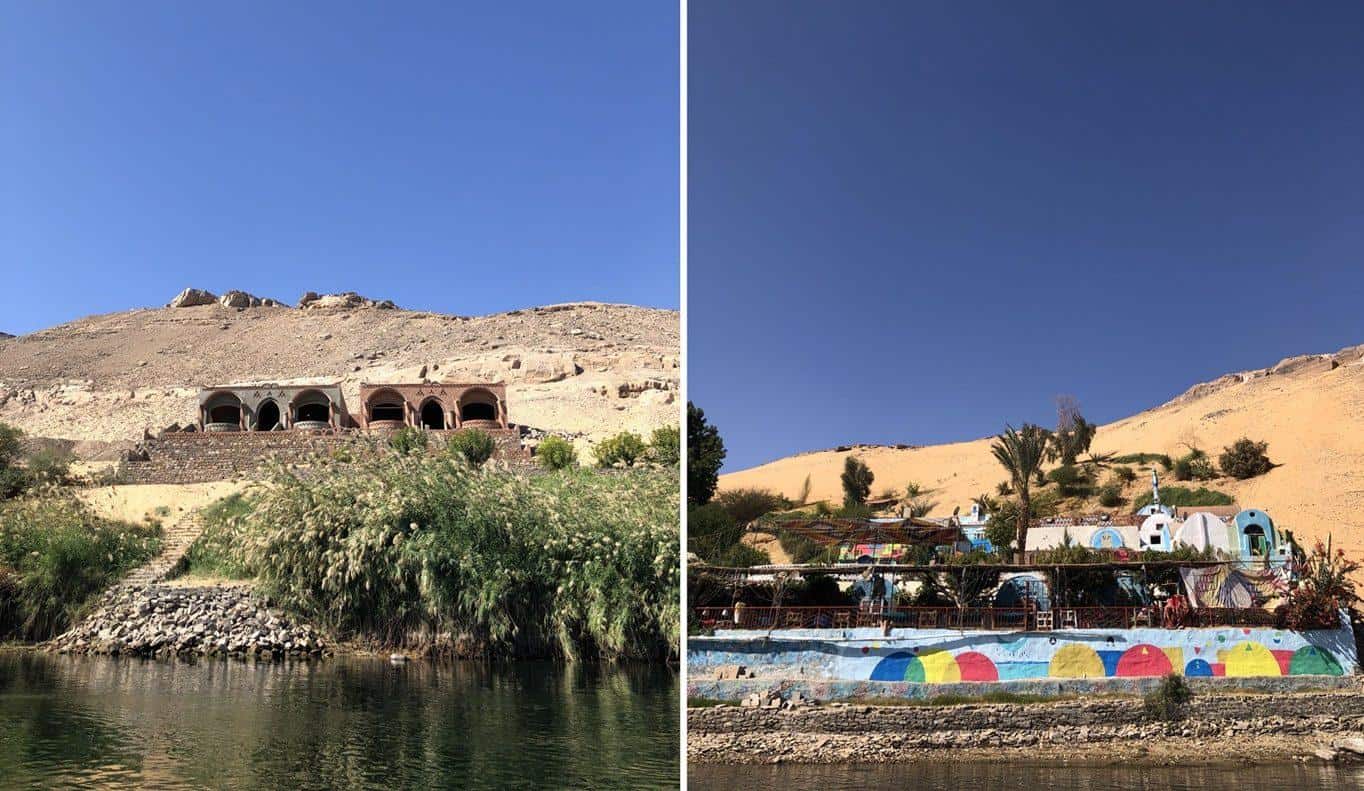
Aswan is located at the top end of the Nubia region, which stretched downward to northern Sudan. As such, it is home to significant ethnic Nubian populations – descendants of an ancient African civilization with a long and rich history, which once presided over their own empire.
photography by: Alex Stratikis
The boat ride itself takes no more than 10-15 minutes from downtown Aswan/Elephantine Island. If you happen to go on a bright clear day, then stunning scenery along the Nile is guaranteed.
During the boat trip you will get a glimpse of the bustling city of Aswan, whilst the Nile’s western bank is home to vast expanses of desert, encroaching up to the waterfront. Additionally, the boat will pass by some tourist hotspots, such as the mausoleum of Aga Khan, the Aswan Botanical Gardens and numerous small islands, jutting out from the middle of the river. If you get lucky enough, you might even witness a dust devil in action, an unparalleled and unforgettable sight to behold.
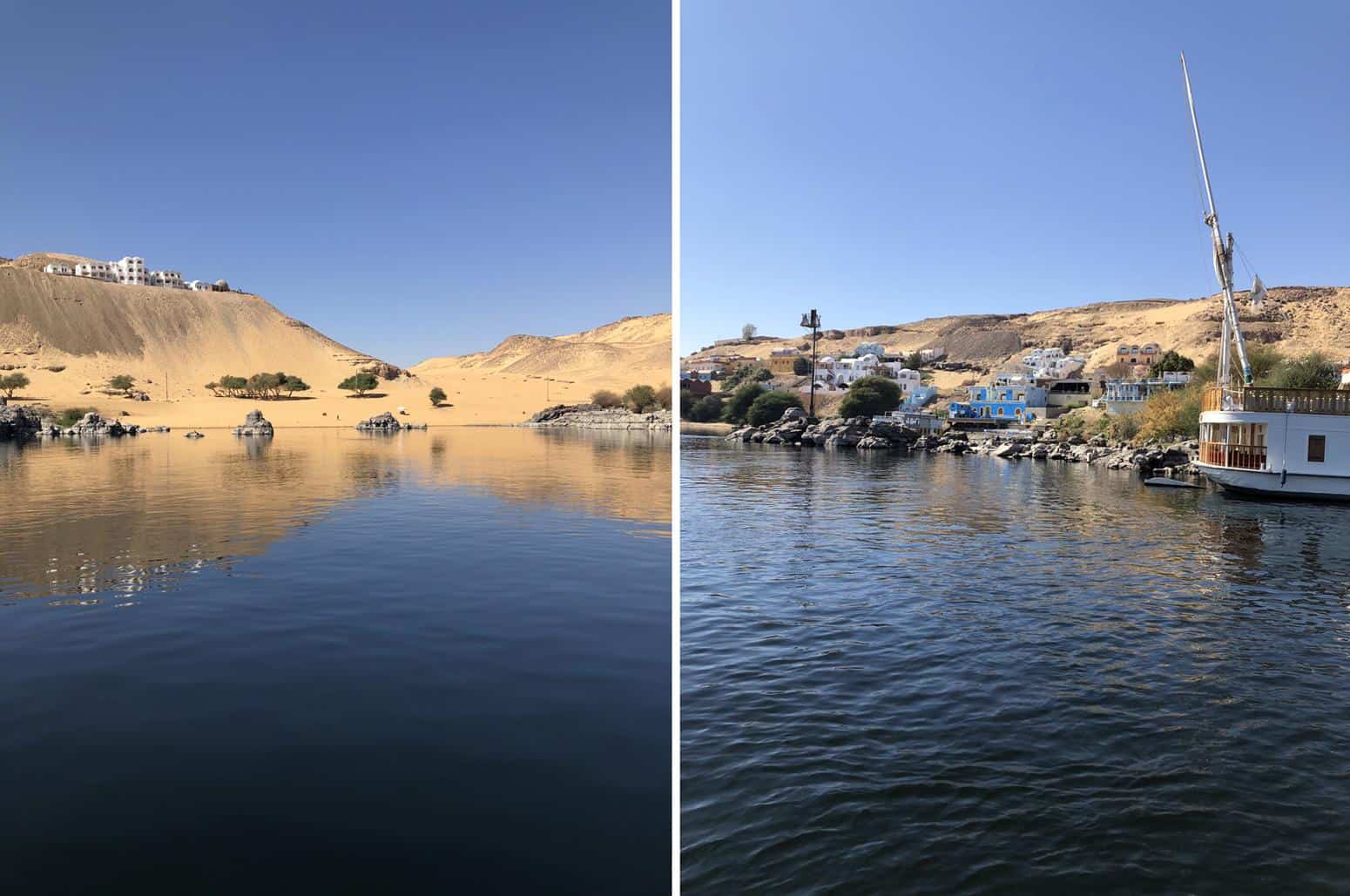
Many other villages, guesthouses and even luxury hotels can be spotted along the banks of River Nile (and even on its small islands) while approaching to the village.
photography by: Alex Stratikis
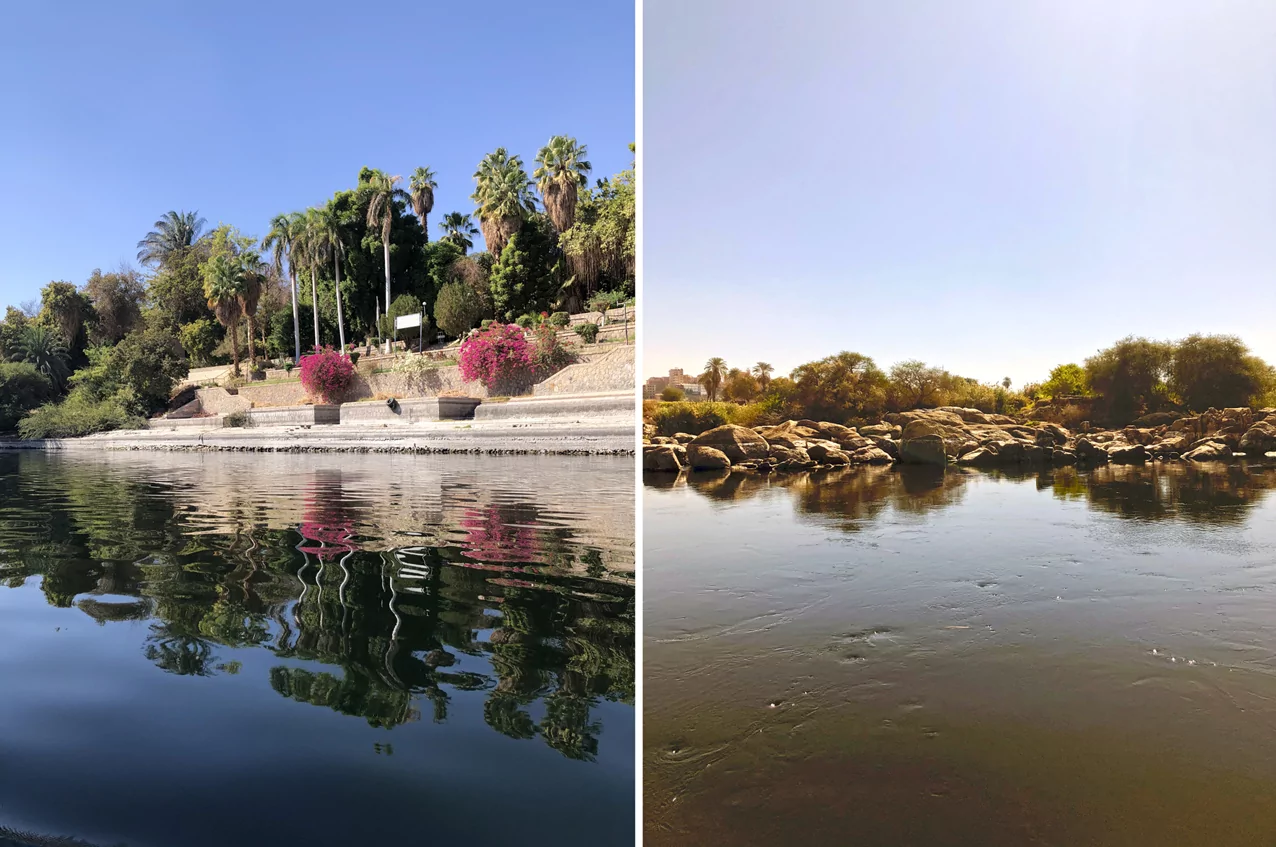
Another must-see attraction you will pass-by on the boat ride if heading from Aswan center is the city’s botanical garden. The island is named El Nabatat, and in its entirety constitutes the stunning gardens.
photography by: Alex Stratikis
Upon arrival, you’ll instantly be struck by how colorful every building is, and while many places in Egypt have their fair share of beautifully painted buildings and bright murals, these traditional Nubian designs are in a league of their own.
Interestingly, all houses in Gharb Soheil are built from mud bricks, consisting of a mixture of clay, water, hay and sand. Another intriguing and recurring design feature some eagle-eyed visitors might notice is the domed ceiling in many of the village’s buildings, a traditional design that works by evenly distributing the heat from the sun’s rays throughout the building.
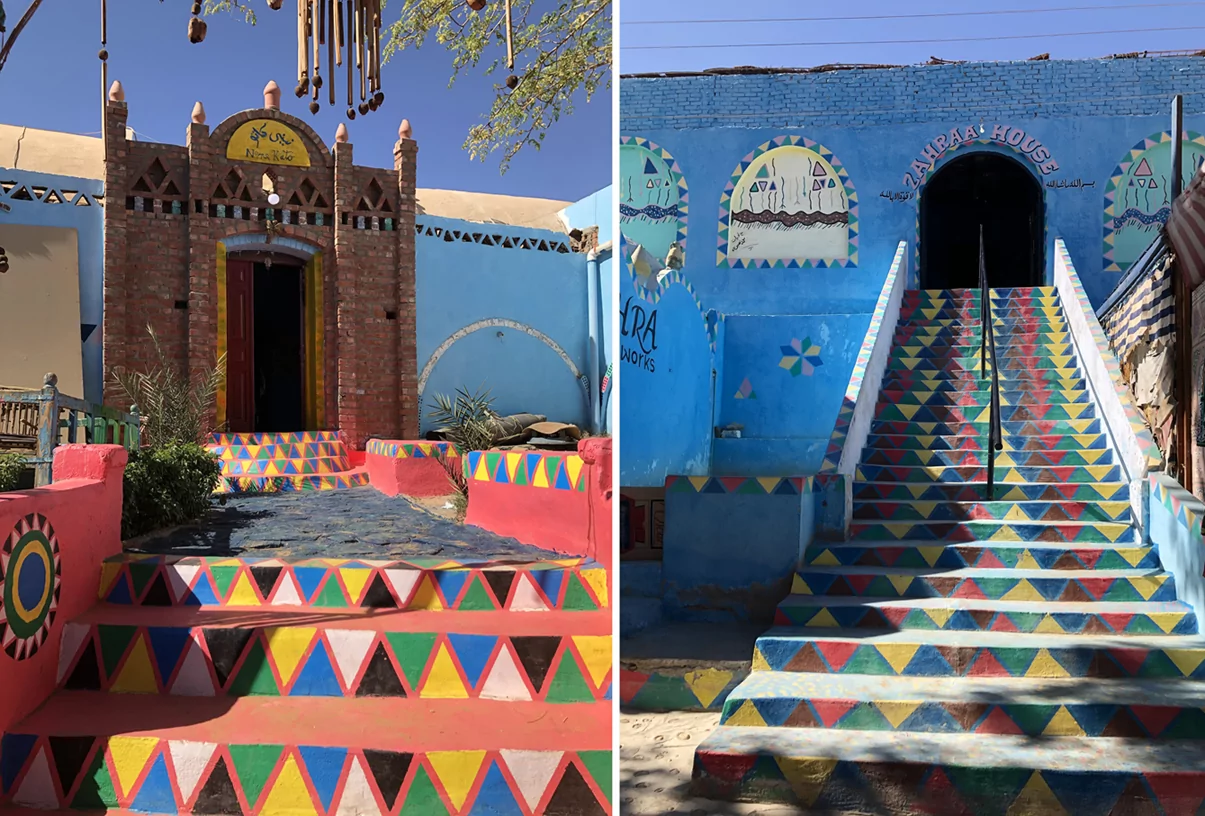
At every turn and corner, you will find amazingly vibrant designs, which usually cover every square inch of the buildings located on the island. The triangular patterns you see here are a typical feature of Nubian design aesthetics.
photography by: Alex Stratikis
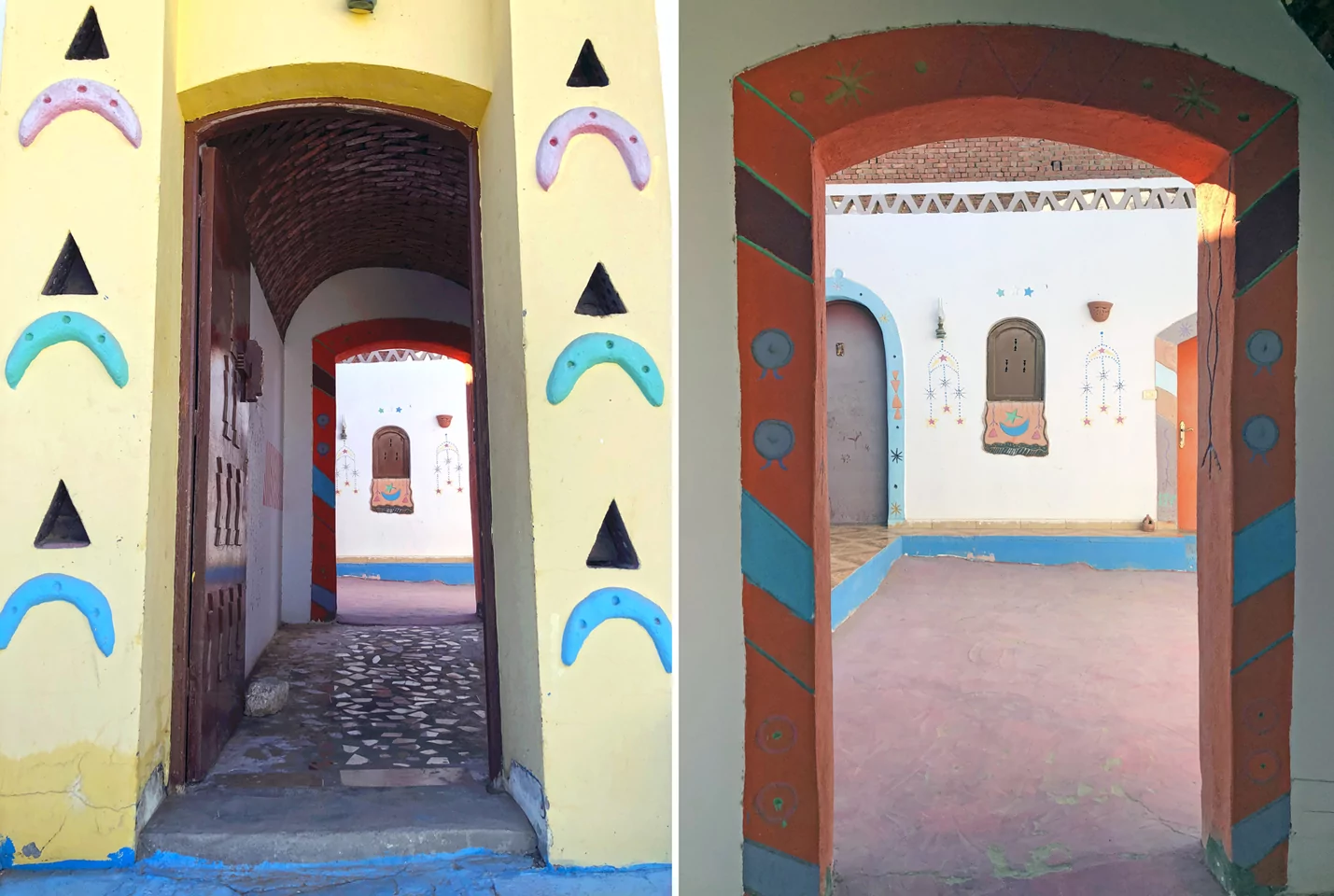
It’s easy to find yourself engrossed in the beauty of this village. Simply walking through a small doorway such as this one will lead you to an entirely new section for you to explore.
photography by: Alex Stratikis
The village itself is fairly small, however, the pathways are winding and complex, with many hidden spots at every turn. Therefore, I would personally recommend setting aside about 3-4 hours if you want to thoroughly explore all the hidden nooks, crannies and alleys.

If you would like to spend more time on the island, then there are many accommodation options to look into. Pictured here is the recently repainted Anakato 3 Houses.
photography by: Alex Stratikis
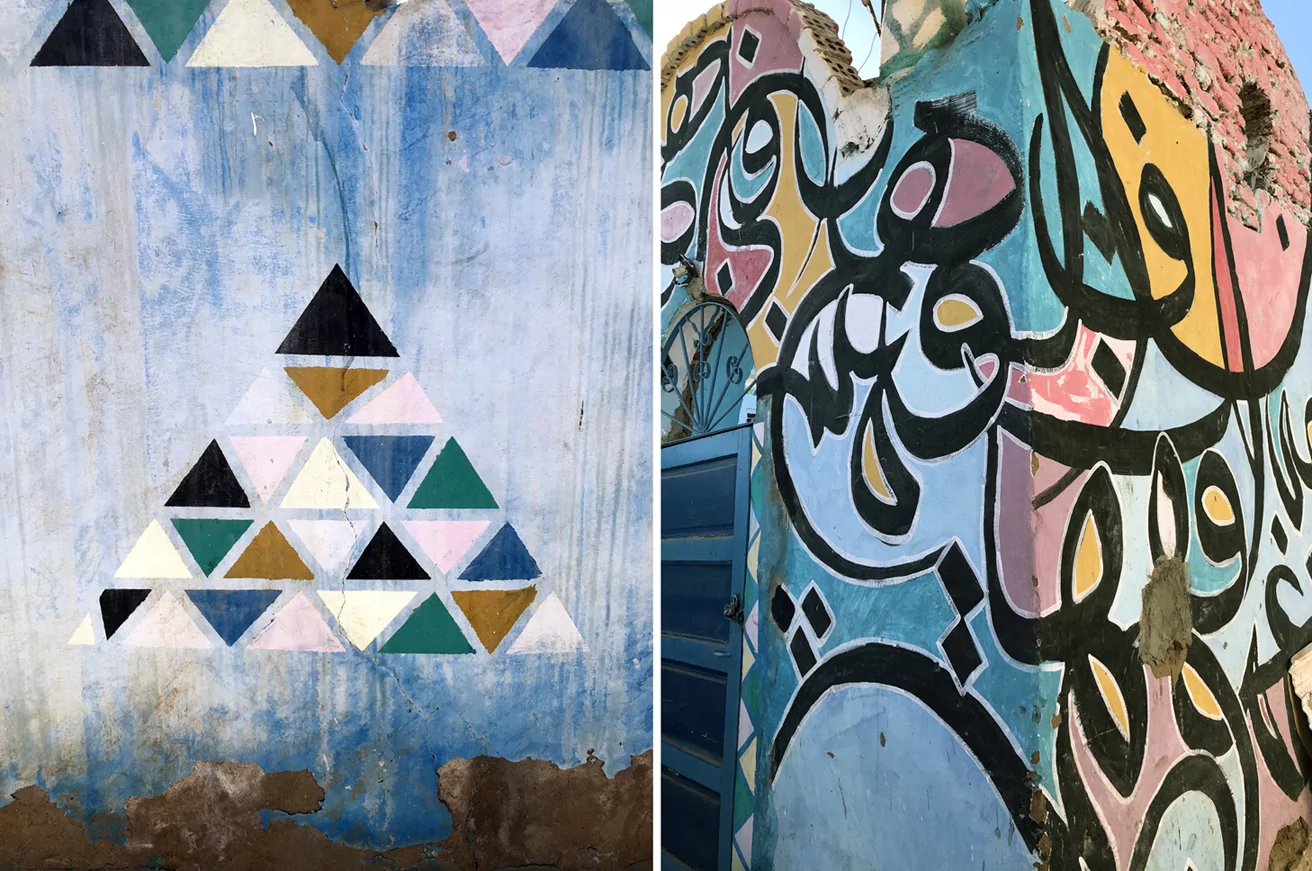
More examples of the kinds of murals and artworks covering the buildings in and around the village.
photography by: Alex Stratikis
Exploring and visually absorbing the immense beauty of this place is undoubtedly the main attraction for visitors, with most of the time there best spent by wandering around every alley you could find and getting lost along the way.
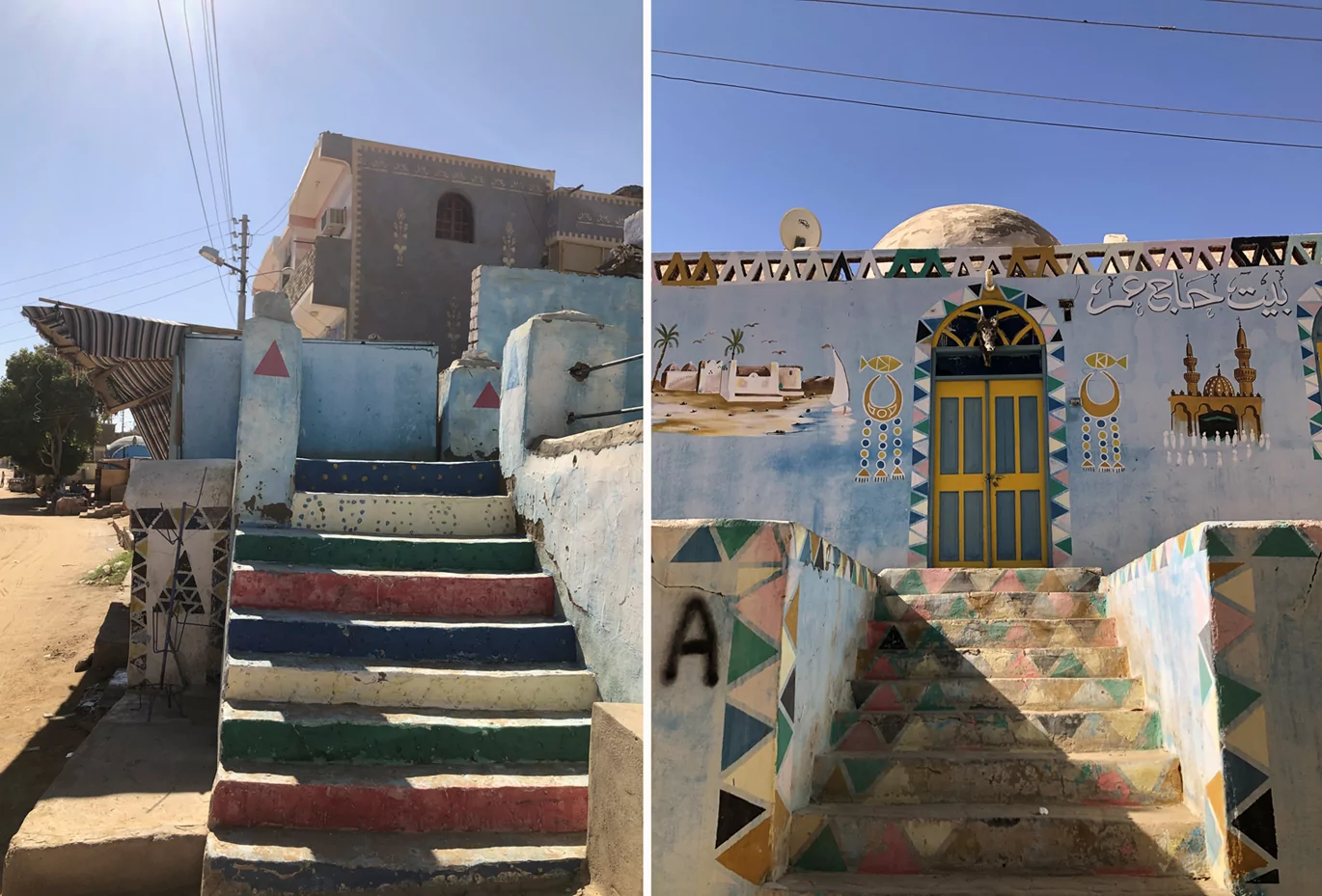
I was lucky enough to visit the village during a fairly quiet period, which allowed me to be undisturbed while taking photos of various locations in all their colorful glory.
photography by: Alex Stratikis
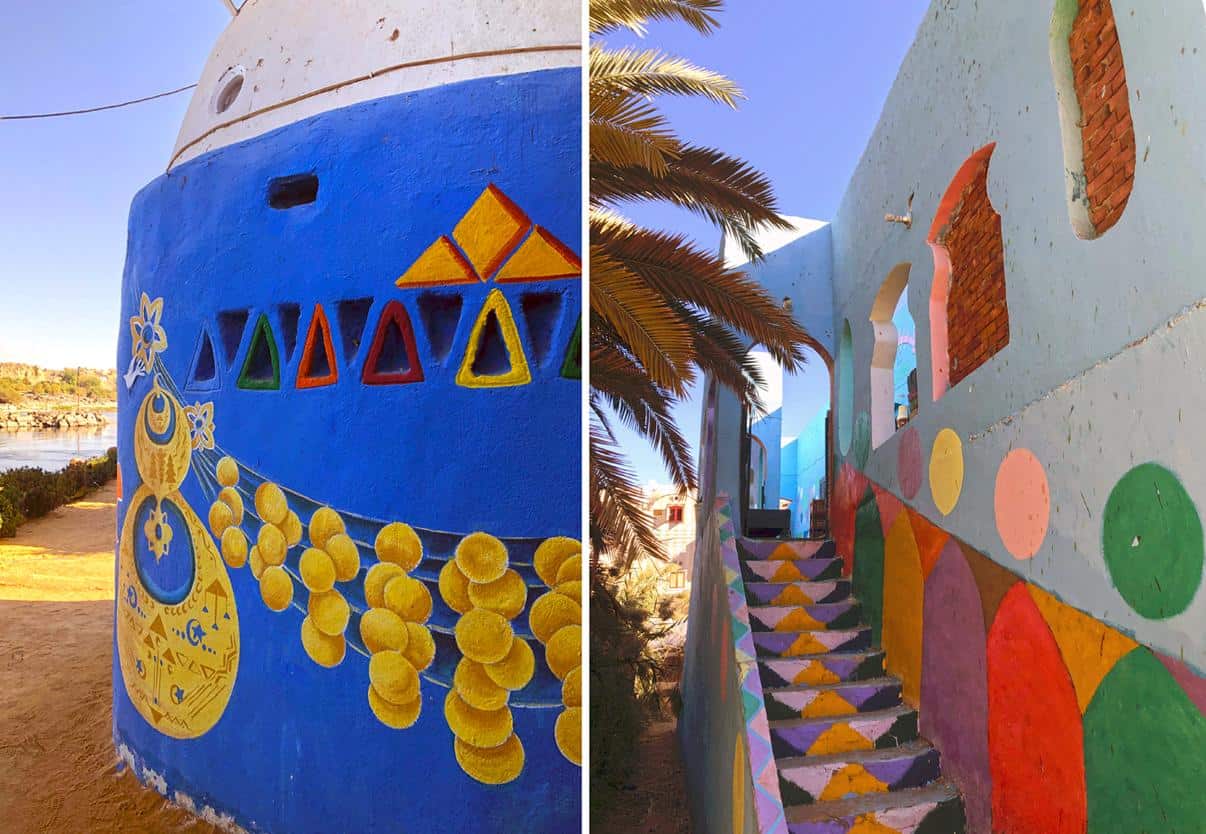
This particular village has gained a lot of traction on the likes of Instagram lately, mostly due to various influencers posting content of the vividly painted buildings.
photography by: Alex Stratikis
There are plenty of other things to see and do along the way, for example, plenty of local eateries, where you’ll have a chance to experience the Nubian cuisine at its full glory, most notably, a restaurant by the name of ‘Kato Dool’, a popular place for visitors, offering a large assortment of scrumptious bites like various stews in a clay pot and freshly caught fish from the nearby Nile.

The Anakato 3 Nubian Houses has a restaurant attached. This includes a large outdoor section, which allows you to sit back and enjoy the surrounding scenery along the River Nile.
photography by: Alex Stratikis
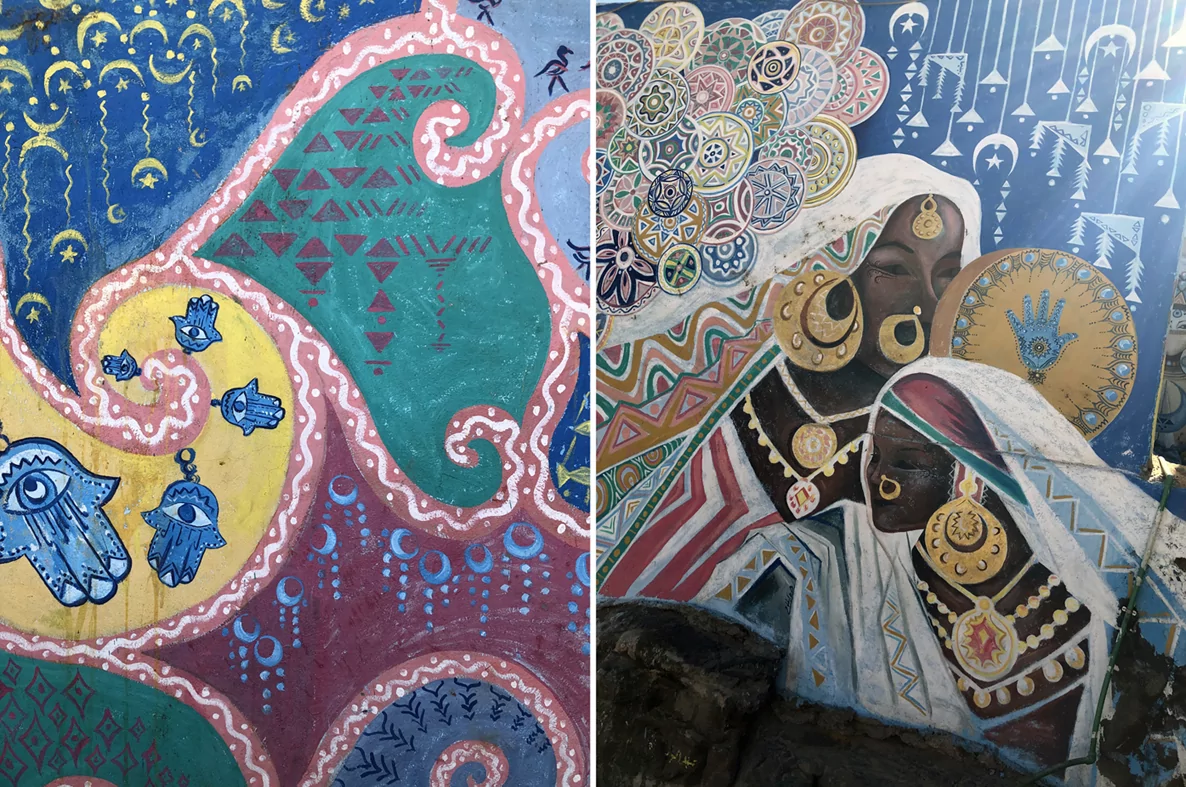
Even after just stepping off the boat, we were all greeted by wonderful artwork depicting traditional Nubian female attire, as well commonly used shapes and pattern designs.
photography by: Alex Stratikis
Luckily for shopaholics, stores and stalls are plentiful throughout the village, many of which have a large selection of local goods, such as garments, handbags, herbs and spices, perfumes, teas and other interesting knick-knacks that might serve as the perfect souvenir to bring home.
Surprisingly, vendors tend to be a lot less aggressive than on the mainland, making the shopping experience much more pleasant, and free of any pressure to purchase something which might be useless.
The adventurists among you will be glad to know that several men in and around the village offer a scenic camel ride across the desert landscape surrounding Gharb Soheil. However, be prepared for an intense haggling session to ensure you get a fair price.

It doesn’t take much exploring to find a wide variety of stores selling local goods. In the right-hand side picture you can see a small selection of the herbs, spices and pigment dyes that are on offer to buy.
photography by: Alex Stratikis
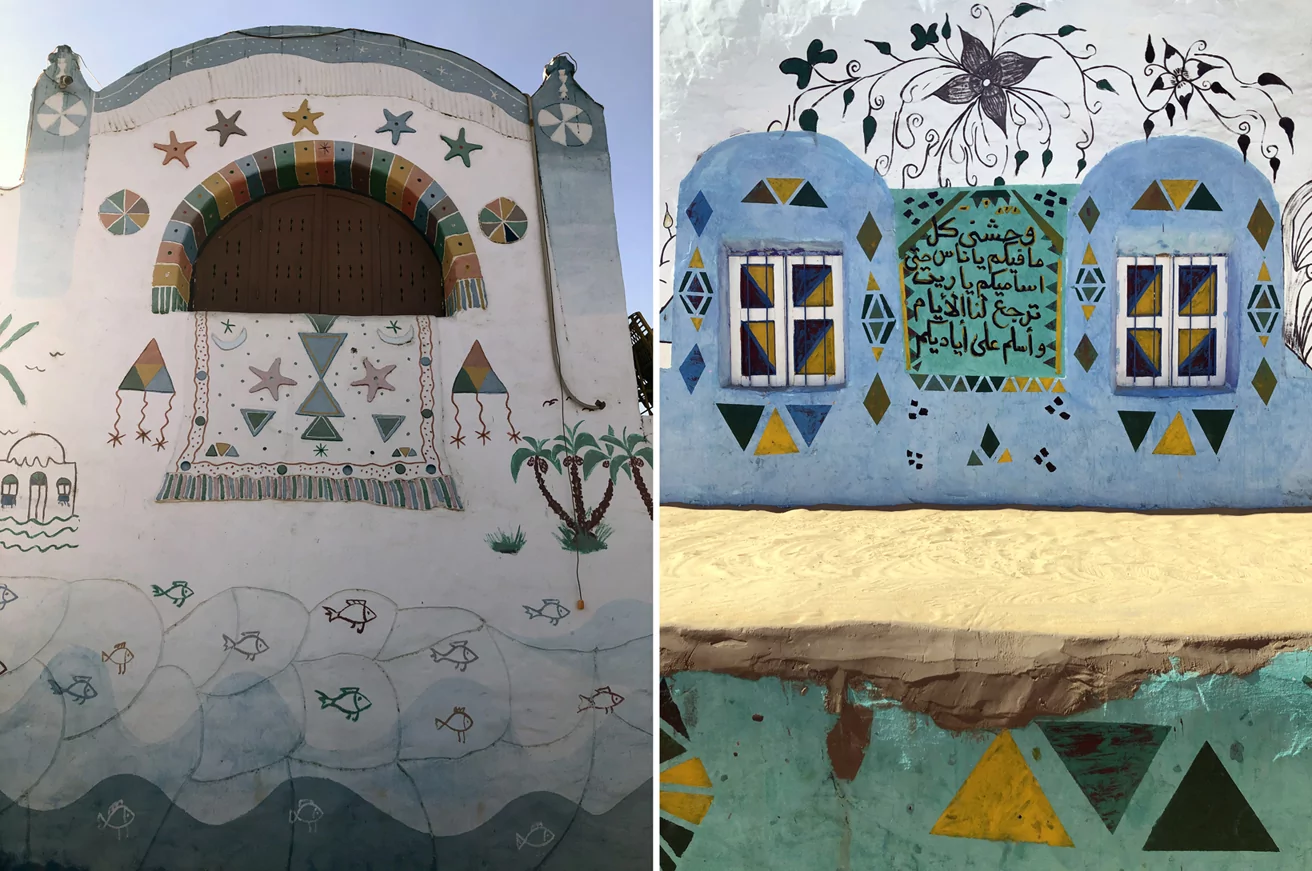
Some murals are actually very well hidden and can only be found when getting off the beaten track. It seemed to me that a lot of effort was made by the locals to make this place as lively as possible.
photography by: Alex Stratikis
I’m a 26 years old Greek/Scottish guy who currently works as a freelance Japanese to English translator. In my free time I love to travel and explore as much as I possibly can. I grew up for the most part in Scotland, before moving to Tokyo by myself at the age of 19, to start an intensive Japanese course. I believe that this is where the “living” part of my life really began, inspiring me to see more of this beautiful world we all live in.
Other things I love to do in my free time include keeping active/exercising regularly, videogames and making House music on my laptop.
Check my Instagram for more interesting and inspiring content
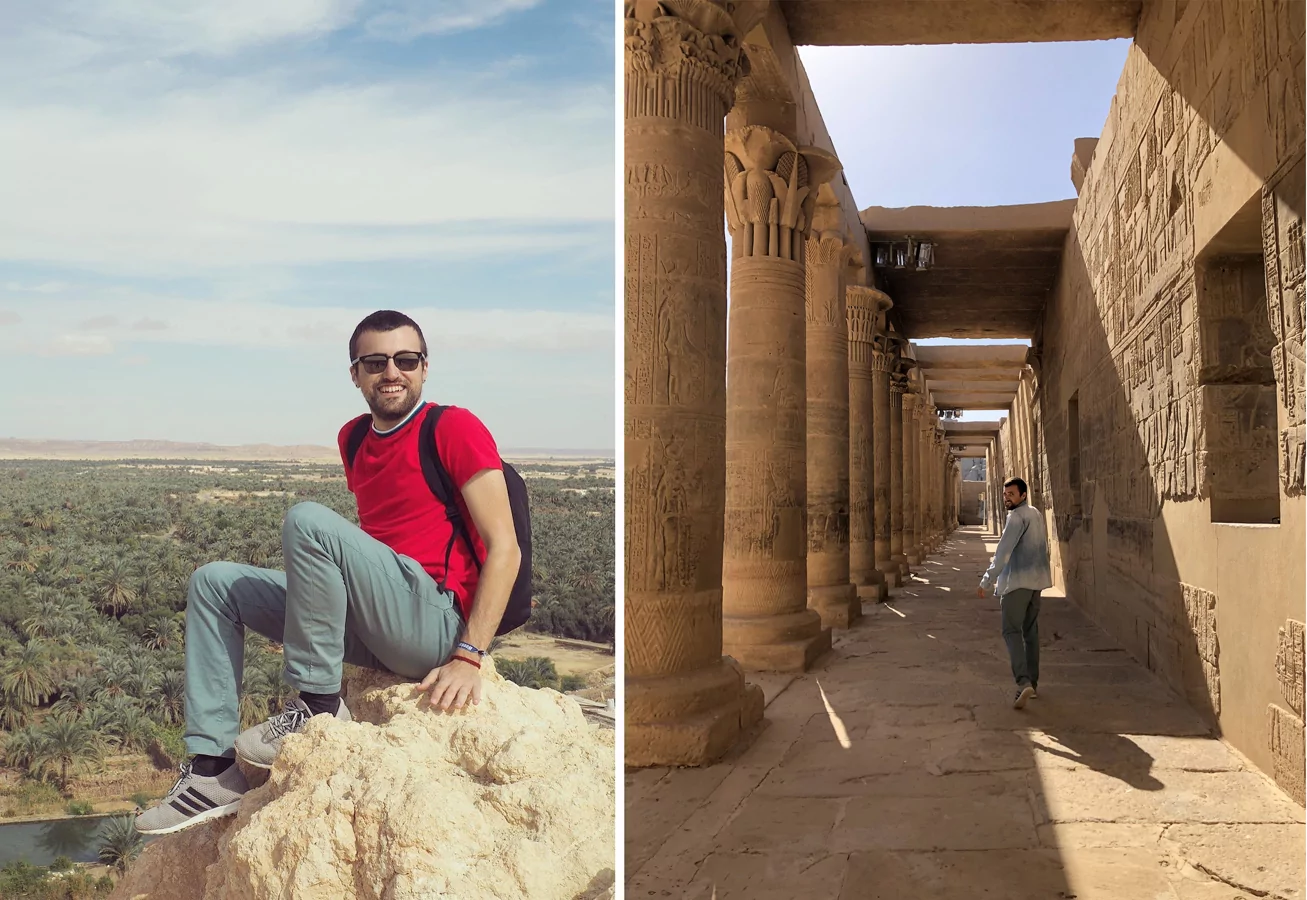
photography by: Alex Stratikis